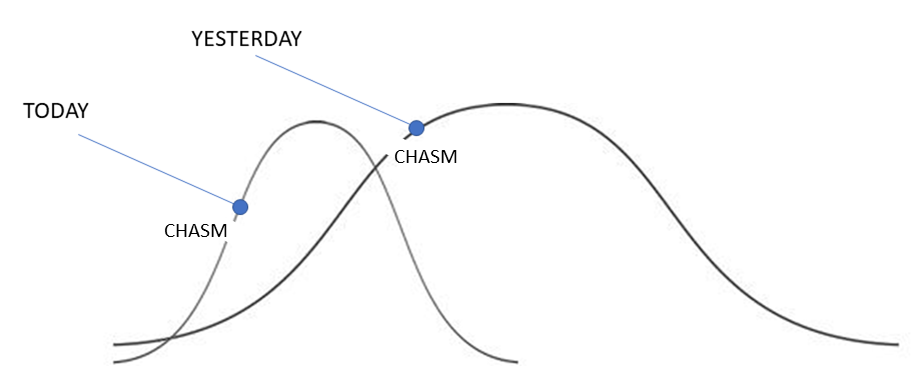
Marketing In The Age of Assistance - Same As It Ever Was
Every day seems to bring a new way for consumers to connect with the data, products, services, and answers they need.
Amazon has its Alexa Echo device, Apple has Siri, Microsoft has Cortana, Google has its Google Assistant, Samsung has Bixby, and the list just keeps getting longer. The integration of these assistants into our lives seems to be reaching critical mass.
Amazon is now taking pre-orders for its finger-based assistive device dubbed, Echo Loop. Echo Loop is an on-the-go wearable Echo device that wraps around your finger in the form of a ring, allowing consumers to literally have Alexa wrapped around their finger.

And in the spirit of Google Glass, Google’s 2013 optic-based connected device, Amazon is launching Echo Frames, allowing consumers to wear Alexa directly on their faces.
Not to be outdone in this apparent war of assistance, Google has integrated its AI-based Google Assistant into Nest cameras and practically every other smart home device they offer, making it easier for consumers to include digital assistants into their everyday lives.

In a few short years, we’ve gone from a handful of assistant devices to hundreds. Even Mercedes-Benz has launched its A-Class sedan with its own brand of vehicle assistance that promises to be the most intuitive and easy-to-use in-vehicle assistant in the industry.
Does any of this mean that consumers are clamoring for a microwave they can talk to? Maybe they are.
You May Ask Yourself - How Did I Get Here?
As a marketer in this burgeoning age of assistance, the immortal words of Talking Heads lead singer David Byrne may come to mind, “How did I get here?” It shouldn’t come as a surprise to you that the answer is, the same as it ever was, same as it ever was, same as it ever was.
“Connective tech, devices, and processes that allow consumers to find answers, get their problems solved and tasks completed with ease and speed, has always been a cornerstone of consumer behavior and always will be, no matter the age of the user.“

It’s the same as it ever was. Consumers have always seen value in things they believe will enrich their lives. Consumers are clearly embracing technologies that allow them to connect to the things they desire, and they don’t seem to have any qualms with giving up a little privacy and a lot of cash in the process.
In 1504 Peter Henlein, a locksmith and clockmaker of Nuremberg, Germany, invented the world’s first pocket watch. I’m sure his new portable timepiece was met with jeers such as, “who is so important that they always need to know what time it is!”
Speaking of time, it’s time marketers started to realize what salespeople have always known. Consumers value their time more than their money, as it’s the one thing in their lives that can not be replenished.
Early Adopters Are Adopting Earlier
What has changed is the speed at which we adopt new processes and ways in which we do the things we do. One of the reasons marketers need to be hyper-aware of these new connection processes is that consumers Cross the Chasm much faster than in the past.

Lifecycles and adoption rates are so much different today than yesterday. If we were to plot out adoption rates a decade ago versus today, it may look something like the above bell curve, showing a condensed adoption rate. The “Chasm” Geoffrey Moore wrote about in his bestselling book about adoption cycles, “Crossing the Chasm”, may not be so much a leap anymore as an exaggerated step.
Ever since the launch of the first iPhone, lines spanning around the block at the local Apple Store have become commonplace when a new product launches. The difference is the frequency in which new products are launching.
Getting your hands on the latest-and-greatest has become far more important than waiting to learn how it might change one’s life, or savings account balance.
The Speed of the Bleed
Consumer adoption of voice technology has been faster than any product since the smartphone. Rapid adoption is not a bad thing for marketers (especially the smart ones). It’s quite the opposite. With rapid adoption, comes rapid data.
“Data, the undeniable lifeblood that courses through the veins of modern marketing strategies, and consumers are bleeding all over the place!” – Larry Bailin
Yes, consumers have more information, more choices and less patience, but we know more about them and their needs than ever before! We know what questions they are asking and when and where they are asking them. We know more about their behaviors than ever before, which means we no longer have to chance consumer intent – we can predict it. I’d even argue that this complete connectivity creates a better consumer, one that is ready to buy when they engage with a brand.
What's a Marketer to Do? - Do This.
Here are a couple of things you can do right now that will help you market better in the age of assistance.
- Digital assistants pull data from search engines such as Bing and Google, which means it’s probably time to tune-up your SEO game. Since search queries on assisted devices are question-based, start to develop a matrix of questions your potential customer may ask when researching your offerings. Develop a matrix of questions and answers for your website. Don’t create a sanitized FAQ page with ridiculous questions no one would ever ask. This needs to be meaningful and helpful, or it’s useless. Keep in mind, consumers search for the problem, not the solution. So develop your list and content based on the problems people have when they need your services.
- Become a user of these devices. Buy a few, play with them, see what they can do and more importantly, if and how any of your competitors may be using them. Using these devices will undoubtedly get the marketing juices flowing. Google has a robust website filled with ways to integrate and extend your offerings using the Google assistant, from the simple to the complex. Amazon has a similar developer website with creative ways to integrate your offerings with Alexa Echo devices.
"The investor of today does not profit from yesterday's growth." ~ Warren Buffett
The future is about tomorrow, not yesterday. Marketers need to forever be forward-leaning. Sure it’s a pain to keep up with all the changes, devices, and comings and goings of a digital world, but that’s the game, and if you’re going to suit up, be prepared to play.
Try and see the opportunity in each innovation. Look for the data points produced that may align with the desired outcome you seek. If there is no valuable data to be had, move on to the next thing.
The minute marketers start complaining about innovation and change is the moment they’ve lost. So in the words of the immortal Fleetwood Mac,
“Don’t Stop Thinking About Tomorrow.”

